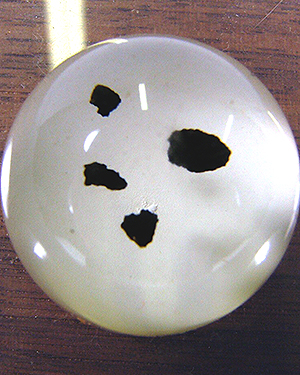Unlock the Mystical Power of the 11 11 Moon: A Celestial Event You Can't Miss! The universe is filled with wonders, and on certain occasions, it aligns in ways that capture our imagination and inspire awe. One such event occurs on November 11, 2024, when the moon enters a unique phase known as the Waxing Gibbous. This celestial phenomenon not only offers a stunning view of the night sky but also carries deep symbolic meaning for those who observe its cycles.
The 11 11 Moon holds special significance due to its numerical alignment and lunar phase. In numerology, the number eleven is considered a master number associated with intuition, insight, and spiritual awakening. When combined with the waxing gibbous phase, which signifies growth and preparation for fullness, this date becomes an extraordinary opportunity to reflect on personal progress and set intentions for the future. As we approach this rare occurrence, let us delve deeper into what makes it so remarkable.
The Enigmatic Waxing Gibbous Phase
On November 11, 2024, the moon will be in a Waxing Gibbous phase, a period where it appears more than half illuminated but not yet fully round. During this time, the moon can be seen throughout most of the night before setting a few hours before sunrise. Observers are treated to a breathtaking sight as the moonlight illuminates the darkened skies, creating an ethereal atmosphere perfect for stargazing or quiet contemplation.
This phase symbolizes a time of building energy and momentum, encouraging individuals to focus on their goals and aspirations. Just as the moon grows closer to reaching its peak illumination, people can harness this cosmic influence to propel themselves toward achieving their dreams. By staying attuned to the moon's rhythms, one may find renewed motivation and clarity during this transformative period.
Tracking the moon phases allows enthusiasts to appreciate the intricate dance between Earth and its natural satellite. Understanding these patterns fosters a greater connection with nature while providing valuable insights into how celestial bodies impact life on our planet. As the Waxing Gibbous phase approaches, take note of its beauty and consider what steps you might take to align your own journey with its powerful message.
Celebrating Humanity's Greatest Achievement
In honor of the historic Apollo 11 moon landing, institutions worldwide have organized commemorative events highlighting humanity's incredible achievement. Among them is the Richard Nixon Presidential Library and Museum, which unveiled an all-new exhibition dedicated to celebrating this milestone anniversary. Through interactive displays and authentic artifacts from the mission, visitors gain firsthand knowledge about the challenges faced by astronauts Neil Armstrong, Buzz Aldrin, and Michael Collins.
This groundbreaking endeavor not only demonstrated technological prowess but also united nations under a shared vision of exploration and discovery. It marked the first instance where humans set foot on another celestial body, forever altering perceptions of space travel and inspiring countless generations to pursue careers in science, technology, engineering, and mathematics (STEM). Today, the legacy of Apollo 11 continues to resonate deeply within society, reminding everyone of what can be accomplished through perseverance and collaboration.
As part of ongoing celebrations, educational programs and public engagements aim to foster curiosity among younger audiences regarding STEM fields. These initiatives underscore the importance of maintaining interest in scientific advancements while honoring pioneers whose bravery paved the way for modern achievements in astronomy and beyond. With each passing year, new discoveries build upon foundations laid down decades ago, ensuring continued progress in understanding the cosmos.
Apollo 11: Pioneering Exploration
The Apollo 11 mission remains one of humankind's greatest accomplishments, showcasing ingenuity and determination at its finest. Launched on July 16, 1969, the spacecraft carried three brave astronauts—Neil Armstrong, Buzz Aldrin, and Michael Collins—into orbit around the moon. After successfully completing lunar orbit insertion maneuvers, the Lunar Module Eagle detached from the Command Module Columbia, descending onto the moon's surface.
Upon touching down, Commander Armstrong famously declared, The Eagle has landed, marking the culmination of years of planning and execution. Hours later, he stepped onto the moon's surface, followed shortly thereafter by Lunar Module Pilot Aldrin. Together, they conducted experiments, collected samples, and planted the United States flag, leaving behind lasting evidence of human presence beyond Earth.
Although returning safely to Earth concluded the primary objectives of Apollo 11, its impact extends far beyond mere physical milestones. The mission exemplified the power of collective effort, proving that even seemingly insurmountable obstacles could be overcome with dedication and teamwork. Furthermore, it sparked global fascination with outer space, motivating further research and development efforts aimed at expanding humanity's reach across the stars.

